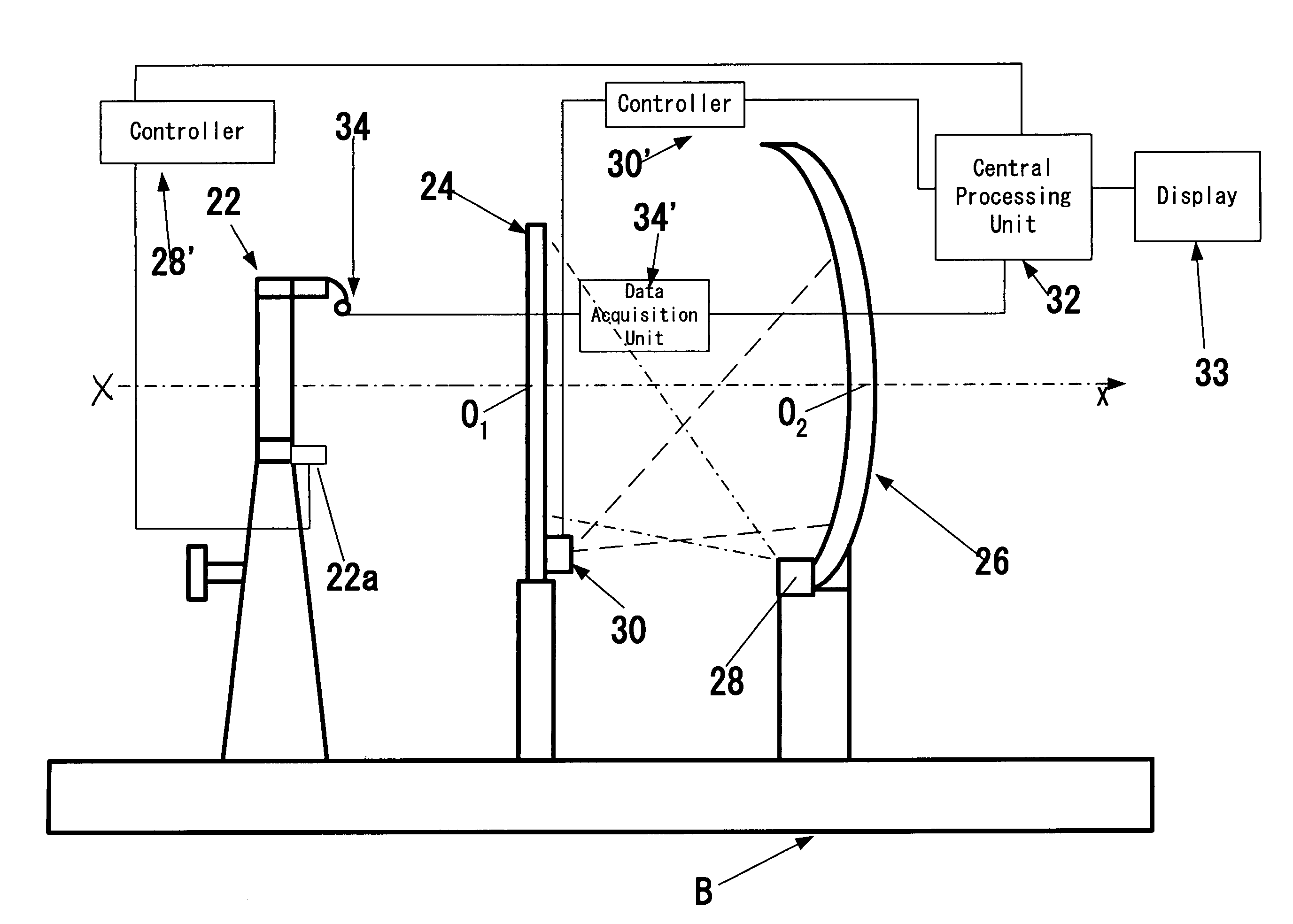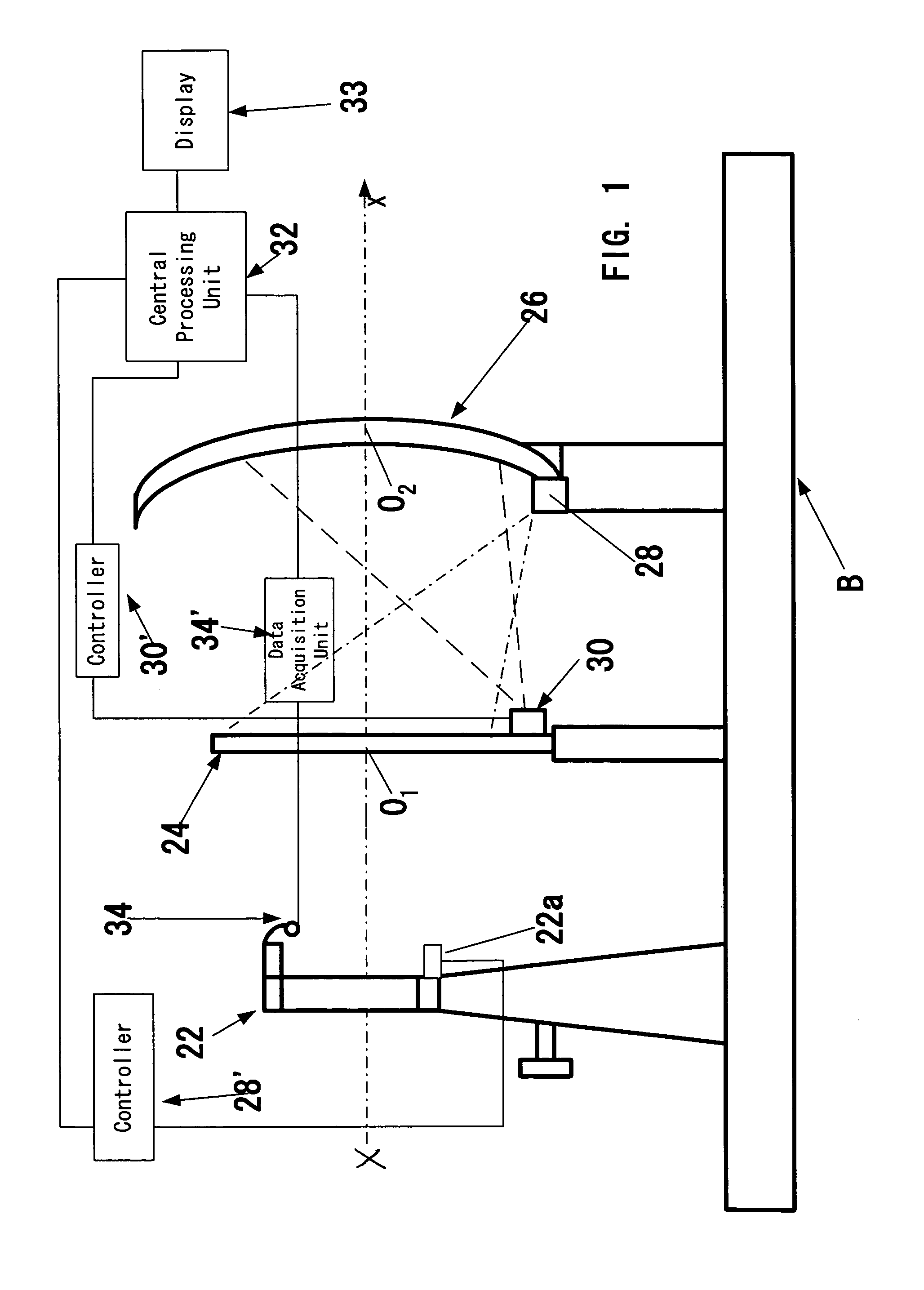Method and apparatus for detecting abnormalities in spatial perception
a spatial perception and abnormality technology, applied in the field of neurophysiology, neurology and neurophysics of the brain, can solve the problems of increasing errors, high-risk situations, and even death, and achieve the effect of reducing the risk of death, increasing the error rate, and improving the accuracy
- Summary
- Abstract
- Description
- Claims
- Application Information
AI Technical Summary
Benefits of technology
Problems solved by technology
Method used
Image
Examples
Embodiment Construction
[0019]The invention is based on the common knowledge in the field of human physiology and on the inventors' observations that in the visual perception each individual uses the close-vision field and the far-vision field that exist irrespective of our consciousness. For example, when an individual is reading a book or looking at a computer keyboard, he / she uses the close-vision field. The inventors have found that in an adult person on average the close-vision field is located at a distance of up to 30-60 cm from the observer's eye, and the center of the close-vision field is generally below the horizontal plane passing through the viewer's eye pupil, e.g., 15° below the aforementioned horizontal plane. The far-vision field is extended from the close-vision field to infinity, e.g., from 40-60 cm to infinity. Examples of the far-vision field are situations on the road during driving, a blackboard in a class-room, a football field, the control panel of an air-traffic controller, the co...
PUM
 Login to View More
Login to View More Abstract
Description
Claims
Application Information
 Login to View More
Login to View More - R&D
- Intellectual Property
- Life Sciences
- Materials
- Tech Scout
- Unparalleled Data Quality
- Higher Quality Content
- 60% Fewer Hallucinations
Browse by: Latest US Patents, China's latest patents, Technical Efficacy Thesaurus, Application Domain, Technology Topic, Popular Technical Reports.
© 2025 PatSnap. All rights reserved.Legal|Privacy policy|Modern Slavery Act Transparency Statement|Sitemap|About US| Contact US: help@patsnap.com



